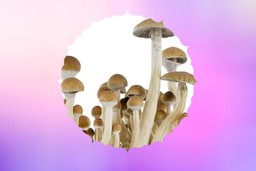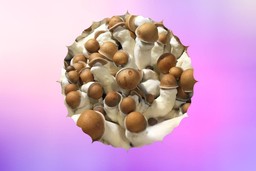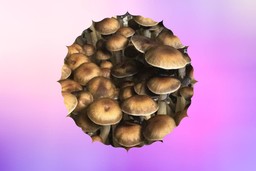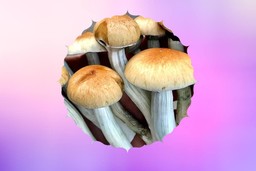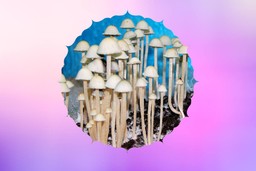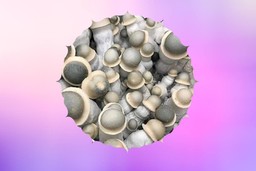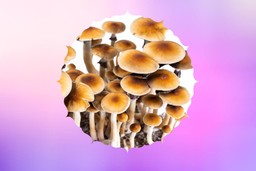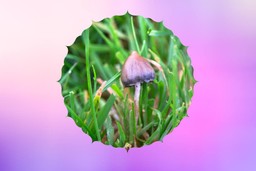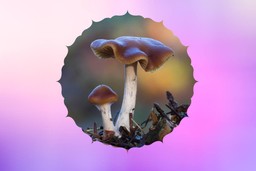This article is part of our article collection, “Unlocking the Magic: A Comprehensive Guide to Safe and Responsible Psilocybin Exploration.” Find the full collection here.
Psilocybin mushroom strains, also known as “magic mushrooms,” are the fruiting bodies of fungi. Specifically, they contain psychoactive compounds and fall into the category of classic psychedelics. As a result, these compounds can cause profound changes in perception, thought, and mood. Furthermore, they have been shown to be highly beneficial for helping resolve complex mental health issues and bring human beings into higher states of Consciousness. There are many different strains of psilocybin mushrooms, each with its unique properties and effects. Most of these are grown indoors in highly controlled settings. However, there are also many species that flourish in the wild.
Find out why Setting Intentions for Psychedelic Journeys matters.
Psilocybin mushroom strains can contain various amounts of psilocybin, psilocin, and other analogs of psilocybin, such as baeocystin, norbaeocystin, bufotenin, and others [1]. Because mushrooms have these different types of alkaloids, the journey can be perceptually different, and the potential health outcomes could vary across strains. Indeed, similar to the “entourage effect” in cannabis, where cannabinoids like THC and CBD work together in the body, it’s thought that the alkaloids in mushrooms could be acting in a similar way. Nonetheless, more research is needed to understand if different mushroom strains could be advantageous for specific health outcomes.
So, let’s take a look at some of these different psilocybin mushroom strains.
Common Psilocybin Mushroom Strains
B+ Strain:
The B+ strain of psilocybin mushrooms is known for its large, meaty caps and thick stems. It is a potent strain that can provide users with intense visuals and a strong sense of euphoria. Furthermore, many users also report feeling a sense of clarity and focus after taking this strain.
FREE Course | Riding the Wave: Principles in Psychedelic Harm Reduction
Penis Envy:
The Penis Envy strain is a unique and potent strain of psilocybin mushrooms. It is known for its distinct appearance, which includes a thick, bulbous cap and a short stem. This strain is said to provide users with intense visual hallucinations and a deep sense of introspection.
Mazatapec:
The Mazatapec strain of psilocybin mushrooms is native to Mexico and is named after the Mazatec people, who have used these mushrooms for centuries. It is known for its mild yet euphoric effects and its ability to induce deep meditative states.
Find out How to Take Shrooms Safely.
Amazonian:
The Amazonian strain of psilocybin mushrooms is native to the Amazon rainforest and is known for its potency and intense visual effects. It is said to provide users with a strong sense of connection to nature and an increased appreciation for the natural world.
Blue Meanie:
The Blue Meanie strain of psilocybin mushrooms is a potent and visually striking strain. It is known for its blue-tinted caps and its ability to induce intense visual hallucinations. Additionally, this strain is said to provide users with a sense of relaxation and euphoria.
Albino Penis Envy:
The Albino Penis Envy strain is a rare and highly potent strain of psilocybin mushrooms. It is similar to the Penis Envy strain but has a more potent effect. It is known for its strong visual hallucinations and its ability to induce deep introspection.
Find out How to Store Magic Mushrooms and Psilocybin Products.
Along with species of mushrooms that are native to other parts of the world and are mostly grown indoors in cooler climates, there are several psilocybin varieties that grow in the wild here in North America. Here are a few strains that could be growing out your back door:
Psilocybe Cubensis:
Also known as “Golden Teachers,” Psilocybe Cubensis is one of the most well-known strains of psilocybin mushrooms. It’s commonly found in the southern and central regions of the United States, as well as in Mexico and Central and South America. This strain is typically larger in size, with caps that can reach up to 8 cm in diameter. It is known for its golden-yellow caps and its ability to provide users with deep insights and introspection. Additionally, it is said to provide a feeling of euphoria and a sense of connection with the natural world.
Psilocybe Semilanceata:
Psilocybe Semilanceata, also known as “liberty caps,” is a smaller strain of psilocybin mushroom that is commonly found in the Pacific Northwest region of the United States and Canada. These mushrooms have a distinctive conical shape and are usually smaller than other strains. The effects of Psilocybe Semilanceata are similar to those of Psilocybe Cubensis, but they may be more intense due to the smaller size of the mushrooms.
Psilocybe Cyanescens:
Psilocybe Cyanescens, also known as “wavy caps,” are potent psilocybin mushrooms found in the Pacific West region of the United States and Canada. These mushrooms are often smaller than other strains, but they contain higher levels of psilocybin and psilocin, the psychoactive compounds in magic mushrooms.
Find out How to Dose Magic Mushrooms here.
Conclusions
These are just a few of the more common species of psilocybin mushrooms that can be both cultivated indoors and found in the wild. These psychedelic fungi can be found all over the world and have been used by various cultures for healing and spiritual practices for thousands of years. So, if you’re interested in learning more about psilocybin mushrooms, how they work in the human body to shift consciousness, and the various safety protocols and best practices, sign up for Psychedelic Support’s comprehensive course on our fungi friends. “Understanding Psilocybin: Effects, Neurobiology, and Therapeutic Approaches” – sign up today!
References
- Wieczorek, P. P., Witkowska, D., Jasicka-Misiak, I., Poliwoda, A., Oterman, M., & Zielińska, K. (2015). Bioactive alkaloids of hallucinogenic mushrooms. Studies in natural products chemistry, 46, 133-168.


